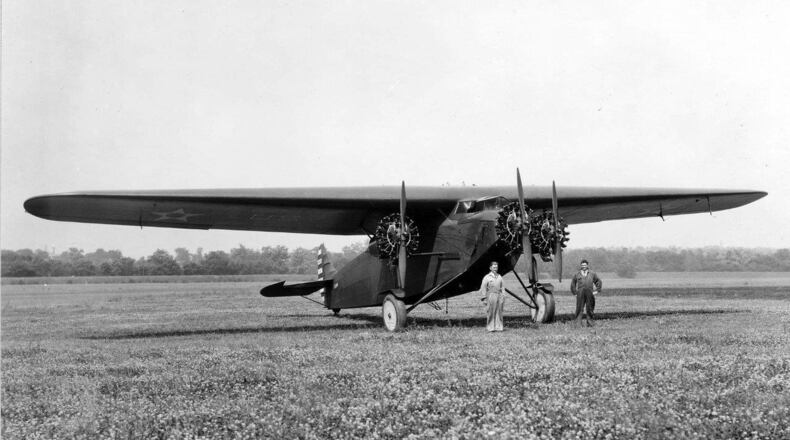“This is a fun story because it celebrates one of many instances where Wright-Patterson contributed to air power development,” said Kenneth Sloat, Air Force Life Cycle Management Center historian. “This trans-Pacific crossing deserves a place in the top 10 aerial achievements of all time because it proved that small bodies of land could be precisely navigated to over vast distances of ocean and helped define how we project air power across the oceans.”
Maitland asked Hegenberger if he would be willing to make the flight together. These two men were the most qualified aviators to undertake the flight. The piloting skills of Maitland were complemented by the technical skills of Hegenberger who would serve as copilot, navigator, radio operator and flight engineer.
The C-2 did not have a name. Because all previous trans-oceanic aircraft were given names by their crews or sponsors, a member of the press came up with a name that was immediately popular, “The Bird of Paradise.”
Maitland and Hegenberger took flight from McCook Field on June 25, 1927. The Bird of Paradise was flown from McCook Field to Crissy Field, San Francisco, California. On June 27, the plane was flown to the Oakland Airport because Oakland had a long, smooth, unpaved runway.
On June 28, 1927, at 7:09 a.m., the Bird of Paradise lifted off with a roll of 4,600 feet at an airspeed of 93 miles per hour and headed to Wheeler Field, Hawaii.
Other than an airspeed indicator and clock, the only navigation equipment available were two compasses – one a conventional magnetic compass and the other an earth induction compass (which failed during the flight).
Previous flights had been unsuccessful, but the Army Air Corps had floating smoke bombs that did not work as planned, radio beacon receivers were out most of the time, and most of the precomputed celestial data, found in tables for planet Jupiter, was in error.
Maitland and Hegenberger were very close to Wheeler Field, Hawaii, when the Bird of Paradise’s center engine failed. Carburetor icing was the culprit and carburetor air heaters had been removed to save weight. The C-2 could not fly on two engines at 10,000 feet so they dropped to just over 4,000 and the engine restarted.
History was made when the men landed at Wheeler Field, at 6:29 a.m. on June 29, 1927. The trans-Pacific flight took 25 hours and 50 minutes.
“These men were both former Wright-Patters and, at the very least, share that in common with our Airmen of today, but I would suggest our Airmen have more in common with them than that,” said Sloat. “This is a story where the professional competency of individuals, Maitland’s piloting skills and Hegenberger’s engineering skills, were merged into a team – a team that succeeded where others might have failed.
“They each brought a high degree of skills to the cockpit and shared of themselves freely; that’s why they succeeded. I see the same thing every day here at Wright-Patterson Air Force Base,” said Sloat. “In terms of air power projection, it probably fueled the minds of strategists who were thinking about strategic bombing that would eventually be so valuable in World War II.”
For more historical information, contact Sloat at 937-255-2064 or kenneth.sloat.1@us.af.mil.
About the Author
